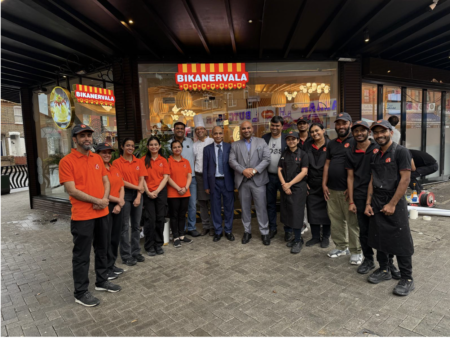On July 30th, King Mohammed VI marks 25 years at the helm of Morocco. Since ascending to the throne in 1999, Mohammed VI has profoundly transformed the north african Kingdom. Facing economic and political challenges, he has driven significant economic and social reforms, aiming to modernise the Cherifian kingdom and establish it as a regional powerhouse.
Infrastructure Modernisation
Under his reign, Morocco has bolstered its infrastructure, most notably with the Tanger Med port, which has become a key logistics hub in Africa and the Mediterranean. Inaugurated in 2007, this port has seen its handling capacity grow from 3 million to nearly 9 million containers by 2023, facilitating trade between Europe, Africa, and the rest of the world.
The railway network has also been modernised with the launch of the continent’s first high-speed rail line in 2018. The Al Boraq TGV, linking Tangier to Casablanca, has cut travel time from 4 hours 45 minutes to 2 hours 10 minutes, transporting over 5 million passengers in 2023. The Morocco Rail Plan 2040 envisions extending this high-speed network by an additional 1500 kilometres.
Simultaneously, the development of road and airport infrastructures has accelerated. Morocco now boasts 2000 kilometres of motorways and 25 airports, 19 of which are international, with air traffic reaching a record 27 million passengers in 2023.
Economic Dynamism through Exports
Morocco has climbed 75 places in the Doing Business rankings in a decade, thanks to sectoral strategies that have energised Moroccan industry. The country has become the second most industrialised in Africa, behind only South Africa, with strong presences in the automotive and aerospace sectors. Vehicle production has reached 700,000 units annually, with a local integration rate of 65%, while the aerospace industry comprises over 142 companies employing around 20,000 people. The tourism sector also has experienced impressive growth, attracting 14.5 million visitors in 2023, surpassing government targets. Morocco is nearing its goal of attracting 17.5 million tourists by 2026, supported by an enhanced hotel offering and initiatives like the international brand “Morocco, Land of Light.”
Social Progress and Gender Equality
Mohammed VI has also launched significant social reforms. The National Initiative for Human Development (INDH), launched in 2005, has helped 15% of the poorest Moroccans escape poverty. In nearly two decades, this programme has changed the lives of hundreds of thousands of people, with investments totalling 61 billion dirhams.
Women’s status has improved through the 2004 Family Code reform and other legislative measures, such as the 2018 law on combating violence against women. The 2007 nationality law reform allowed Moroccan women to pass their nationality to their children, although inequalities persist.
Universal Social Protection
In 2021, the king launched an ambitious programme to extend social protection to the entire Moroccan population by 2025, with an annual cost of 51 billion dirhams. This programme aims to expand mandatory health insurance, generalise family allowances, pension schemes, and unemployment benefits.
In a quarter of a century, Mohammed VI has successfully transformed Morocco, enhancing its infrastructure, energising its economy, and improving social conditions. The country’s GDP has grown from $46.27 billion in 1999 to over $140 billion in 2023, illustrating a robust economic dynamic and confirming the Cherifian kingdom’s new status as a regional powerhouse.
















